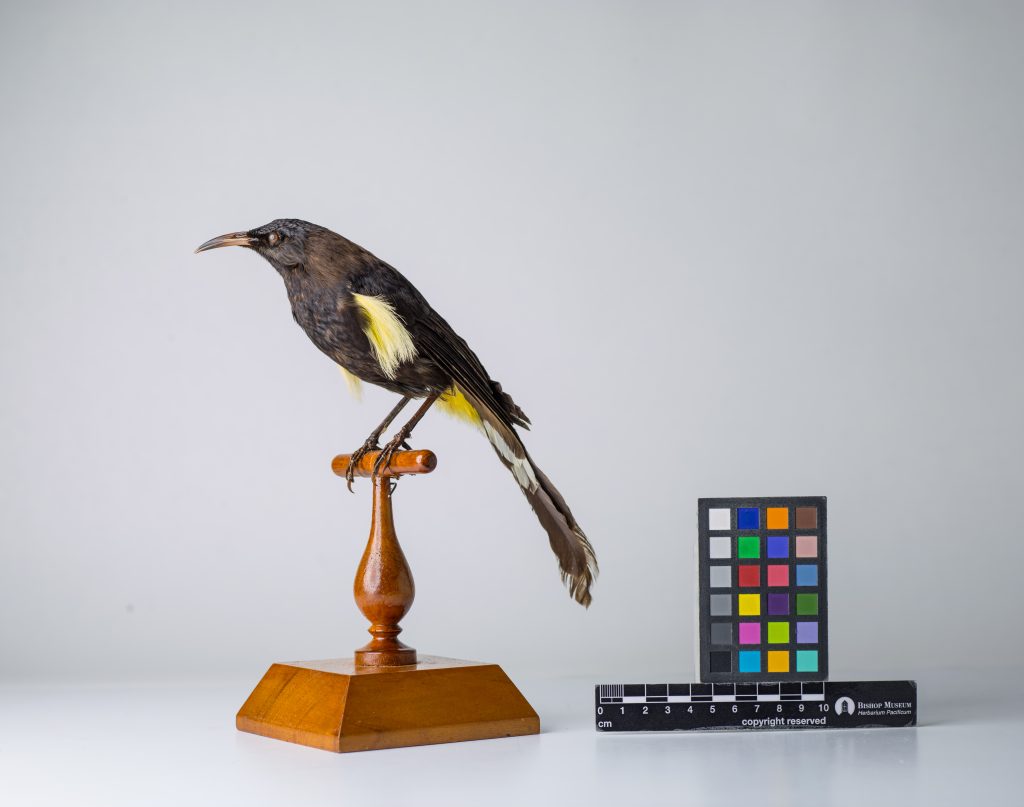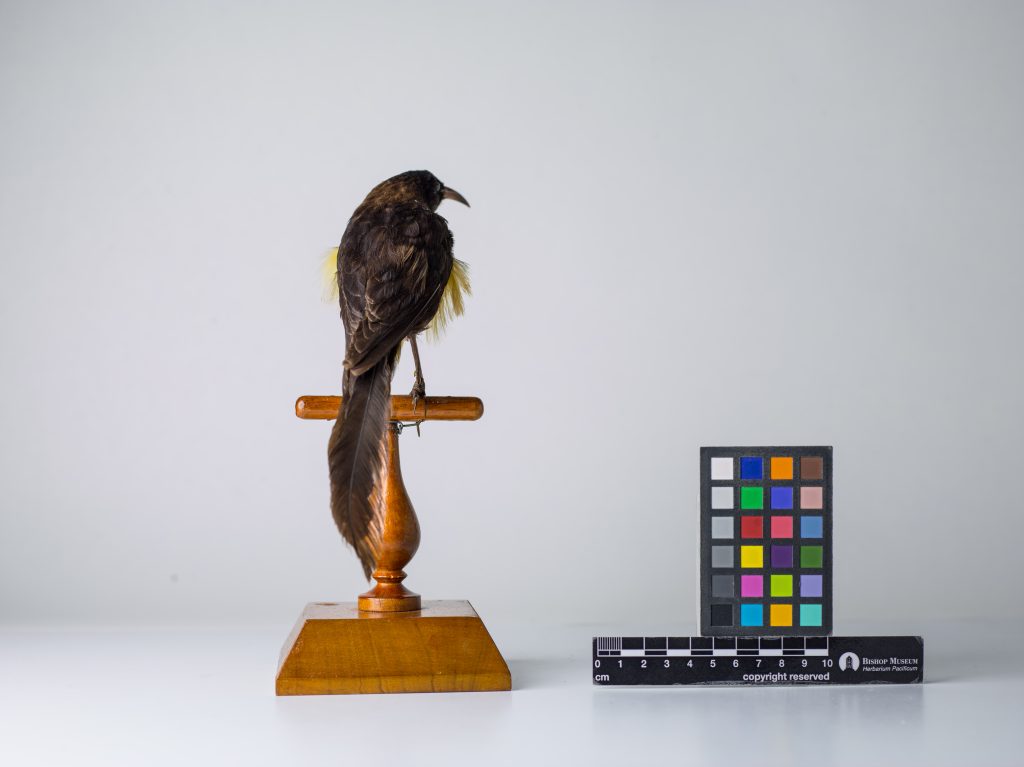Hawaiʻi ʻŌʻō

Names
- Common Name: Hawaiʻi ‘Ō‘ō
- Scientific Name : Moho nobilis
Song
No recordings available.
Conservation Status
Extinct. Last recorded sighting in 1902.
Species Information
This family colonized Hawaiʻi 14-17 million years ago. These Hawaiian Honeyeaters pollinated the lobeliad plants that have existed in Hawaiʻi for 13 million years (Fleisher and McIntosh 2001, Fleischer et al. 2008, Banko and Banko 2009). Very little is known about this historic species, beyond the use of the Native Hawaiian’s use of their yellow feathers for decorative purposes (Lepson 1998). Unfortunately, birds with plumage such as the Hawaiʻi ʻŌʻō were kept in cages, to have on display and later be plucked for their feathers. (Pérez 2021). A related species of ʻōʻō exists still on Kauaʻi, but this Hawaiʻi species went extinct in 1902.
Distribution
Hawaiʻi Island.
Habitat
From Pyle & Pyle 2017: “Charles Pickering (in Cassin 1858) noted them as high up as near the tree line on Mauna Kea and Wilson (1890a) noted an observation by a rancher at ‘Kalicha’ above 1800 m. But by the 1890s, Perkins (1893, 1901, 1903, in Evenhuis 2007:243, 306; see also Banko 1981a) noted that they were found primarily at lower elevations, most abundantly at 700-1200 m, and that they had disappeared from many lowland areas by 1894-1896. Preference for lower elevations, at least in winter (see Henshaw 1902a and Scott et al. 1986 for suggestions of altitudinal migration) could provide a better explanation for their rapid demise through habitat alteration and avian malaria than the notion that collecting them for feathers and food had a significant impact (cf., Wilson and Evans 1899, Henshaw 1902a, Fuller 2001; E 35:114-115).”
Threats
The exact threat that lead to Hawaiʻi ʻŌ’ō’s extinction is uncertain, beyond the effects of exploitation due to their prized feathers. However, the species was likely susceptible to the same factors that threaten other native Hawaiian forest birds. These include, but are not limited to, loss and degradation of habitat, predation by introduced mammals, and disease. The following likely were of particular concern:
- Disease. The precipitous decline of all Hawaiian Moho species suggests that disease played a role in this species’ decline.
- Hunting. Although other ‘ō‘ō species were historically exploited by Native Hawaiians for their feathers, the role this activity played in the decline of the Hawai’i ‘ō‘ō is equivocal, but likely minimal given the species’ plumage.
Photos
Additional Resources
Banko, W. E. (1981). History of endemic Hawaiian birds: Part I: population histories, species accounts: forest birds:’Elepaio,’Ō’ō, & Kioea.
Fleischer, R. C., James, H. F., & Olson, S. L. (2008). Convergent Evolution of Hawaiian and Australo-Pacific honeyeaters from distant songbird ancestors. Current Biology, 18(24), 1927-1931.
Fleischer, R. C., & McIntosh, C. E. (2001). Molecular Systematics and Biogeography of the Hawaiian avifauna. Studies in Avian Biology.
Lepson JK. 1998. Notes on appearance and speculated behavior of the O’ahu ‘O’o (Meliphagidae). Pac Sci 52(3): 210-219.
Pérez, F. L. (2021). The Silent Forest: Impact of Bird Hunting by Prehistoric Polynesians on the Decline and Disappearance of Native Avifauna in Hawai’i. Geographies, 1(3), 192-216.




